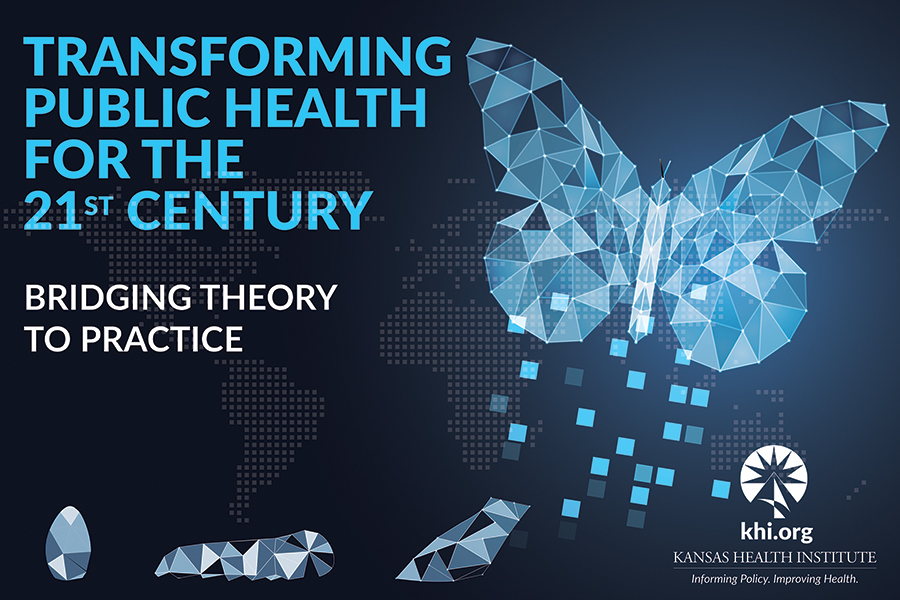Prior posts in the Transforming Public Health blog series have underscored the need for change and strategic routes for public health transformation. Considering that change is critical, and yet most change initiatives fall short or fail outright, how can public health professionals guide successful strategic change initiatives? In this post, we will delve into the change management model shared by John Kotter, Ph.D., specifically his insights on fostering a sense of urgency, to understand how to cultivate a climate ripe for change. Future entries will explore additional facets of Kotter’s model for change.
Building a Sense of Urgency for Public Health Transformation

Why Develop a Sense of Urgency?
Kotter defines a sense of urgency as “a gut-level determination to move and win, now.” This mindset fuels the drive to effect meaningful change swiftly and consistently. A sense of urgency readies the organization (or system) for change and without a high enough sense of urgency among enough people, change efforts are likely to falter. Fostering a sense of urgency is not about invoking fear but inspiring a proactive, purposeful approach to change. It’s about creating an atmosphere filled with enthusiasm rather than fear-induced paralysis. Within the public health context, a sense of urgency propels transformation to address the pressing challenges public health organizations and their communities face more effectively.
Strategies to Build a Sense of Urgency
Kotter provides four strategies to build a sense of urgency. These strategies address the most significant barriers to change, fostering a change-friendly environment that accelerates transformation.
- Make People Feel the Need for Change: Public health changemakers must articulate the circumstances necessitating change. What challenges does public health face, and what are the strategic opportunities for public health? It’s not enough to just communicate these ideas. A sufficient amount of the public health workforce needs to feel the need for change, both intellectually and emotionally. Most public health professionals already sense the challenges facing them and their organizations, evident from the burnout and departures in the field. Public health changemakers can help their peers believe that positive change is possible with their help. The public health challenges of the 21st century require addressing root causes of those challenges, namely the social and structural drivers, rather than mere technical fixes. Public health is uniquely positioned to provide leadership in these instances, offering an opportunity to earn more respect and resources by resolving these problems.
- Engage the Heart: The narrative for change must resonate with public health professionals intellectually, but more importantly, emotionally. Despite the public health discipline being data-rich, stories are a more effective means to create urgency and momentum. Weaving evocative stories through team meetings, all-staff meetings, conference presentations and community discussions can make people feel emotionally connected to a vision for change. Stories can help people see how change will enhance their lives.
- Model Urgency: Public health leaders must embody the change they promote. Our actions should reflect our words, demonstrating urgency in our daily activities and decisions. Demonstrating urgency includes a relentless focus on the vision for change, ensuring that every interaction ends with clearly identified and communicated next steps. It’s also important to ensure that change initiatives aren’t diluted by too many other tasks. By communicating the real opportunities for public health organizations and clearing the path toward change, changemakers can effectively model urgency.
- Address Opponents to Change: There will inevitably be people who resist any transformation journey, and there may be a real reason for skepticism. But it is important to ensure that everyone is moving in the same direction after the decision to create change has been made. Some people still resist change at this point, despite evidence, rationale or consensus. Kotter calls these people “NoNos” because they tend to be opposed to change at all costs. Opponents to change can have real consequences on change initiatives and can derail movement towards even the most compelling opportunities for change. Seeking to understand their concerns, providing clear information and leveraging peer influence are strategies to bring opponents of change on board. However, Kotter also says he’s rarely seen people ardently opposed to change become supporters. If attempts to bring opponents onboard fail, and they continue to hamper the change initiative, it is important to determine how to limit their influence.
Final Thoughts
Building a sense of urgency for public health transformation is no longer a luxury – it’s essential. As public health professionals strive toward change, it is important to engage all stakeholders, reduce resistance and lead with uncompromising purpose and determination. The journey might be challenging, but the destination—a public health system that works better for communities, taxpayers and public health professionals—is undoubtedly worth every effort. The time is now to foster the sense of urgency needed to build the public health system America needs for the 21st century.
About Kansas Health Institute
The Kansas Health Institute supports effective policymaking through nonpartisan research, education and engagement. KHI believes evidence-based information, objective analysis and civil dialogue enable policy leaders to be champions for a healthier Kansas. Established in 1995 with a multiyear grant from the Kansas Health Foundation, KHI is a nonprofit, nonpartisan educational organization based in Topeka.